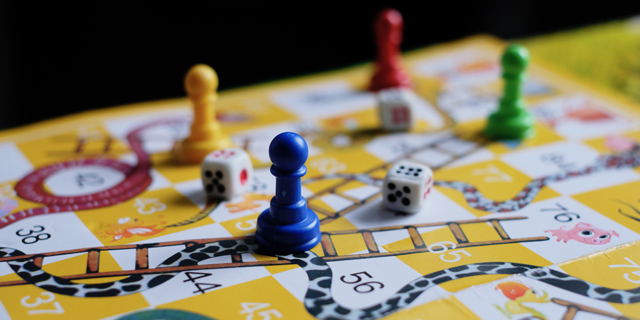A Toy Model to Probe Career Mobility
Life is a series of decisions—especially when it comes to a person’s career path. Now, researchers have developed a statistical model to study the influence of these decisions on the career mobility of individuals and groups [1]. They say that the model could be used by universities to test the impacts of a policy prior to implementation.
The model resembles a game in which a person moves across a hexagonal lattice. At every turn, they take a step to the right, either horizontally or diagonally up or down. Upward steps represent career advances; downward steps, the opposite. Which path is taken is determined by a binomial probability distribution.
This up-or-down probability changes permanently—for better or worse—if a person undergoes an “epiphany,” such as an insight about their lifegoals or their current situation. A person can also experience a “quantum leap,” which is a multistep jump up the lattice in a single turn. A quantum leap happens when the person’s career benefits from circumstances beyond their control, such as the institution of affirmative action programs. The game ends after a predefined number of turns, which marks retirement or death.
Analyzing the outcomes of hundreds of games, Rafael Bittencourt of Centro Universitário SENAI-Cimatec, Brazil, and his colleagues found that for an epiphany to have a significant positive impact on a person’s future trajectory—causing them to climb the lattice over their lifetime—it must happen in childhood. Meanwhile, quantum leaps only impact career level at retirement if they come after an epiphany; otherwise, they rarely stick. This could reflect the person making the most of external support only if an internal resolution has made them suitably receptive.
–Katherine Wright
Katherine Wright is the Deputy Editor of Physics Magazine.
References
- R. A. Bittencourt et al., “Interplay of self, epiphany, and positive actions in shaping individual careers,” Phys. Rev. E 108, 024314 (2023).




